A Journey Through the Pioneering Refs 6350, 6610 & 1016
The Rolex Explorer is often celebrated not just as a luxury watch, but as a functional instrument—crafted for adventure and endurance. Though Rolex has evolved into a synonymous brand with prestige, its roots lie in robust, tool-driven timepieces of the mid-20th century. The Explorer line encapsulates this ethos with three pioneering references: 6350, 6610 and the icon 1016.

Ref. 6350 – The First Explorer (1953)
- Introduced in 1953 circa, the Ref. 6350 was the first to officially bear the “Explorer” name—a direct homage to the successful Everest expedition by Sir Edmund Hillary and Tenzing Norgay.
- It featured a 36 mm stainless steel Oyster case, and the signature 3‑6‑9 Arabic numerals, built for optimal legibility under extreme conditions.
- Critically, the 6350 was Rolex’s first Explorer to carry the “Officially Certified Chronometer” inscription—marking the transition from the earlier “Precision” designation seen on ref. 6150.
- Most dials were glossy black with gilt text, but an ultra-rare “honeycomb” textured dial variation is regarded by collectors as among the most beautiful Rolex dials ever produced.
In short, the 6350 planted Explorer’s flag in Rolex lore—creating a timeless tool watch linked to genuine adventure.
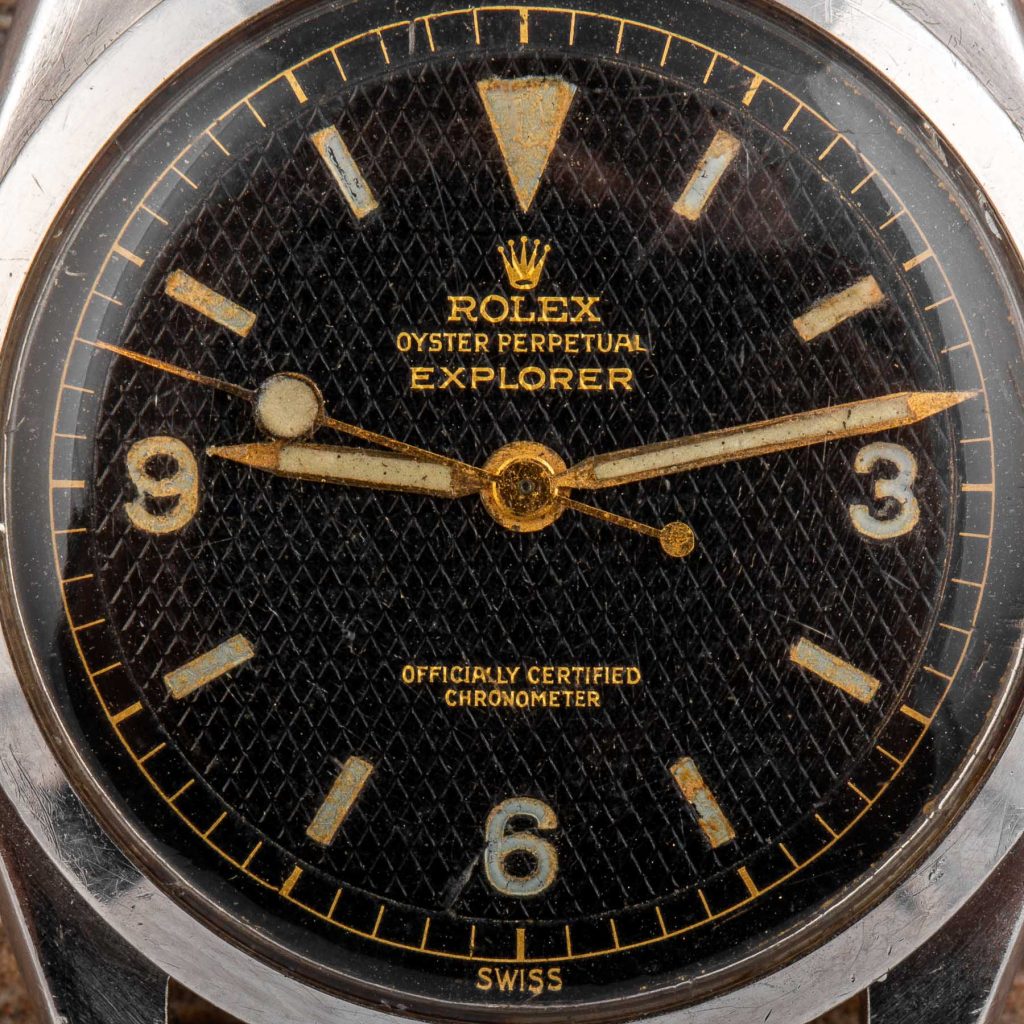
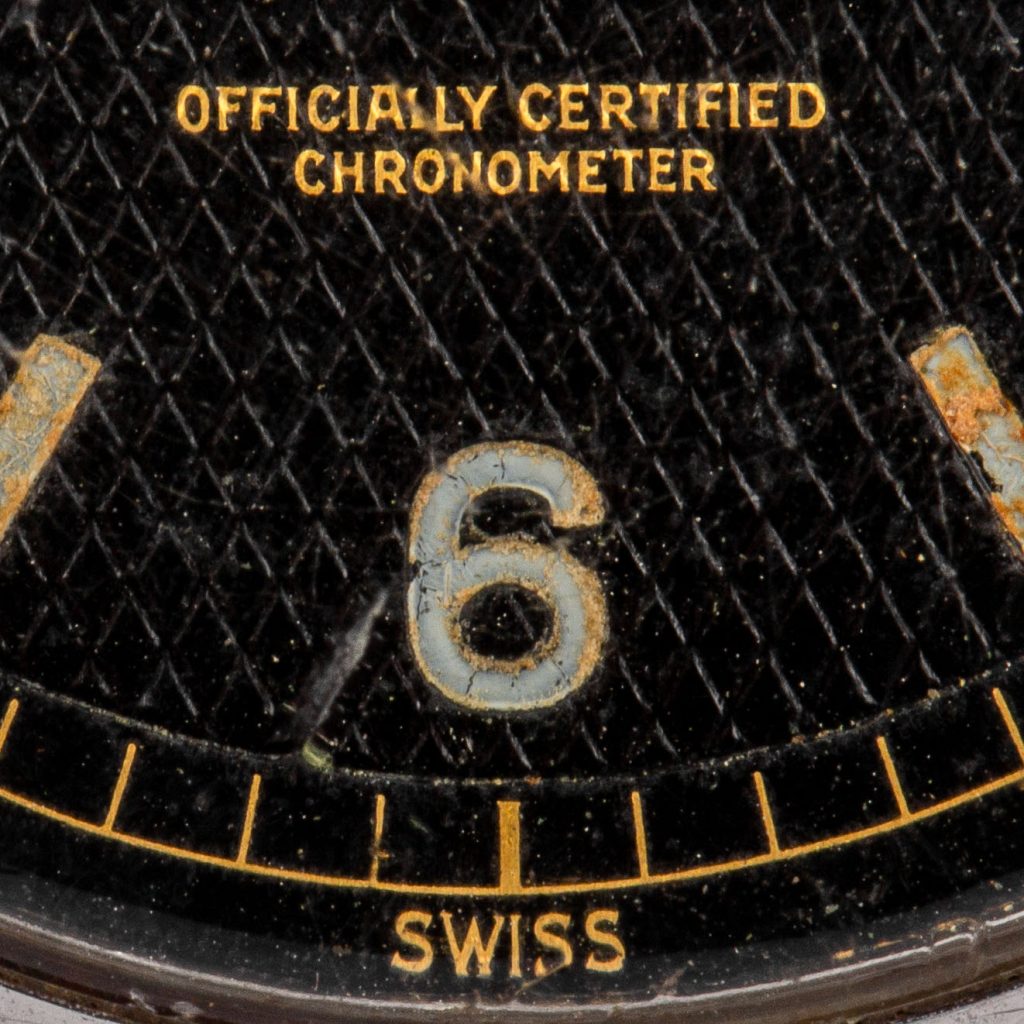
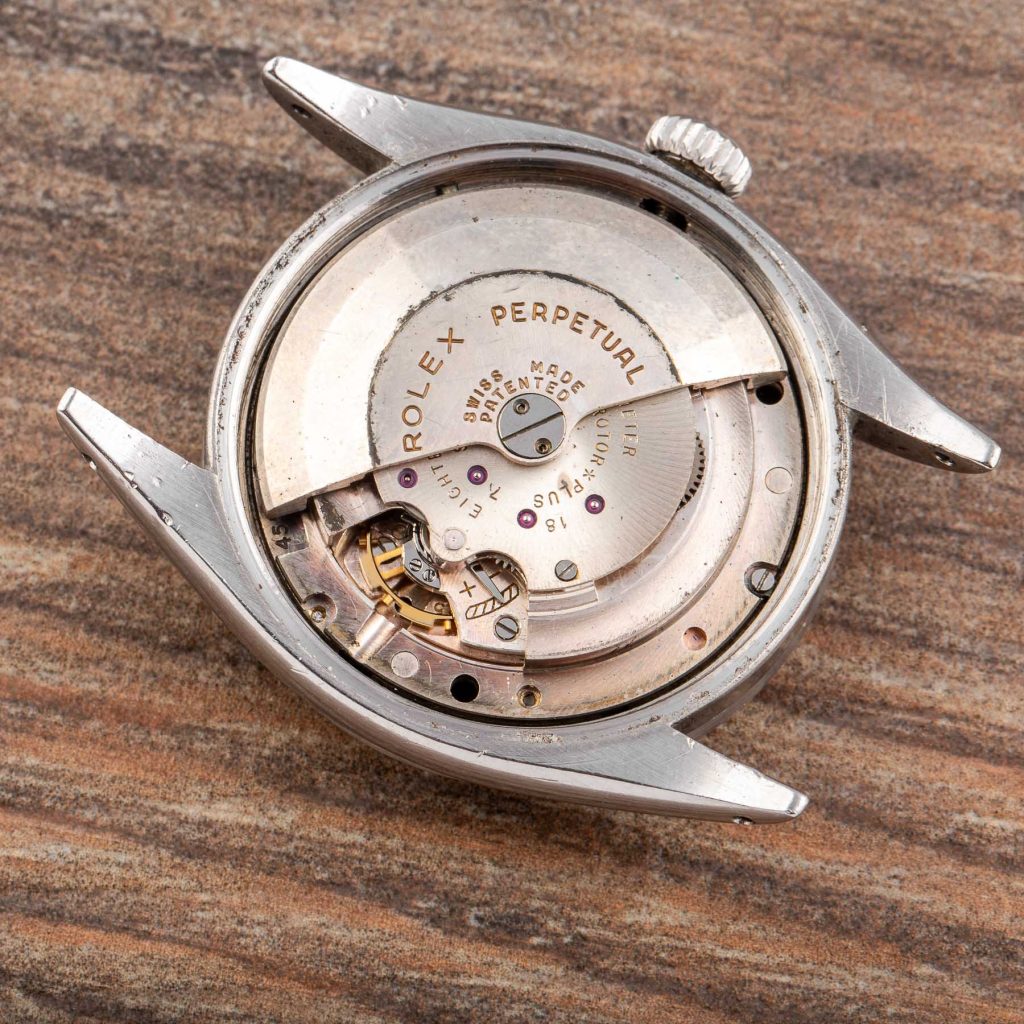
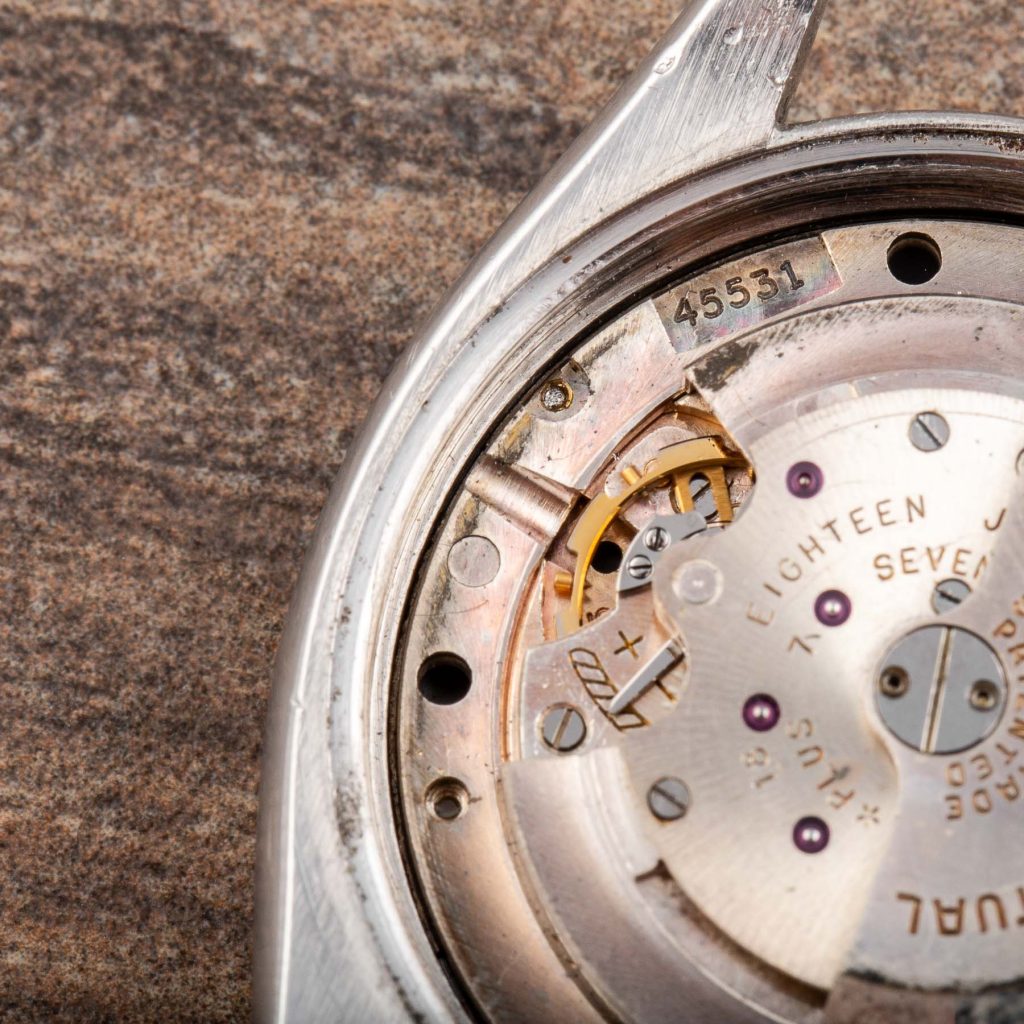
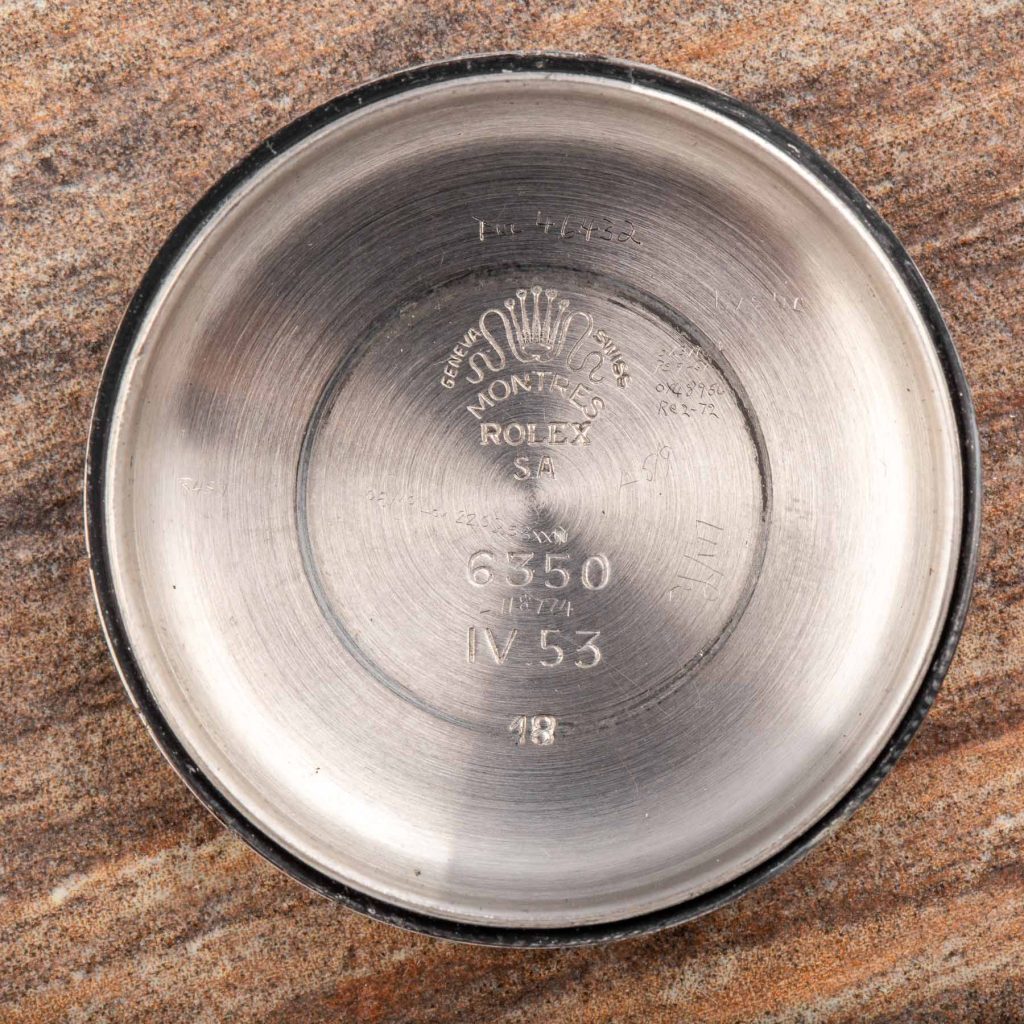
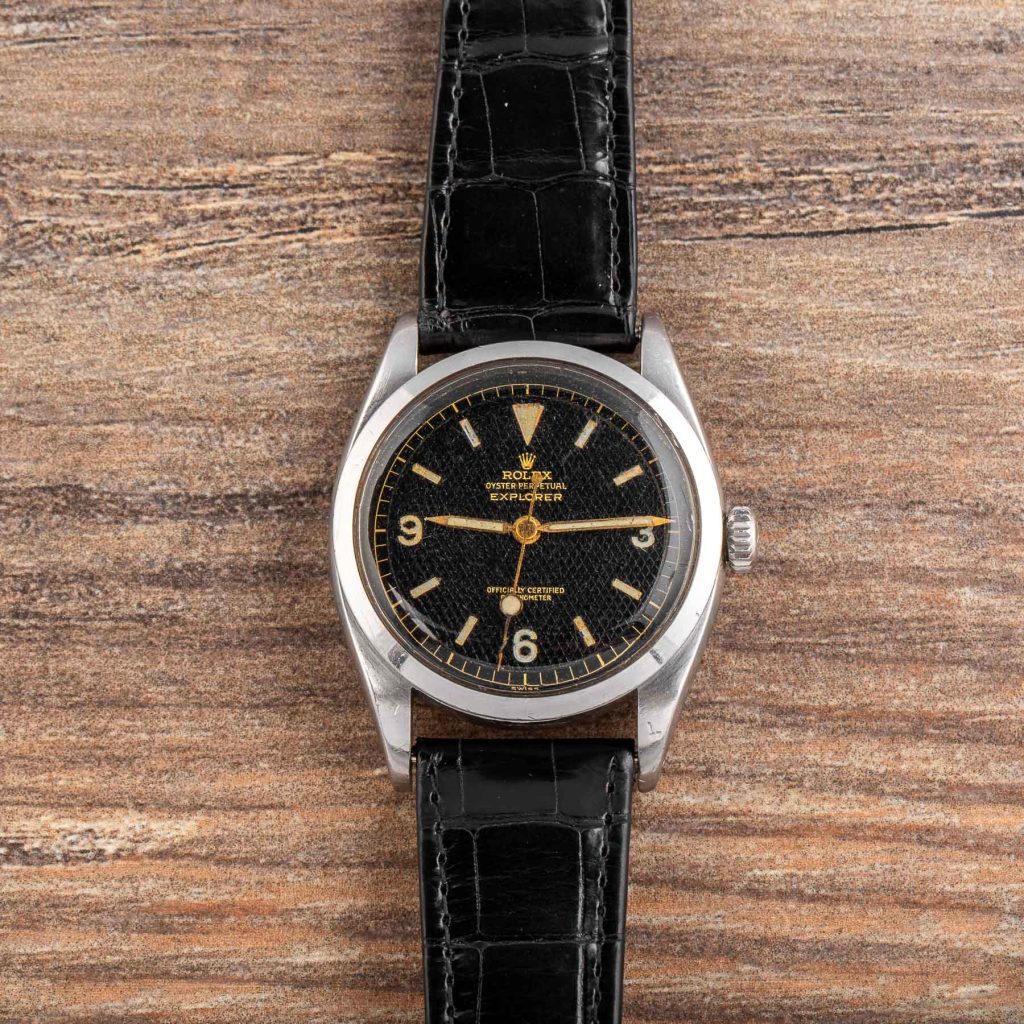

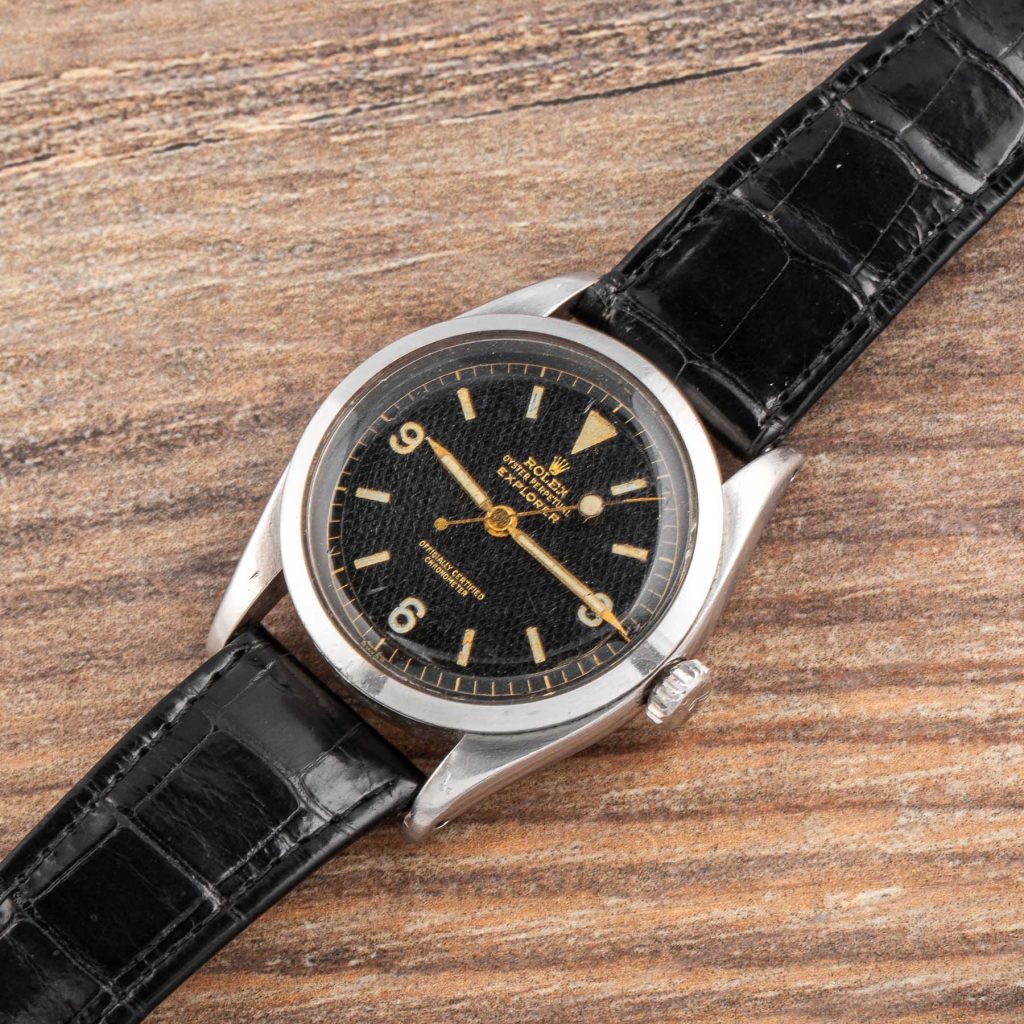
Ref. 6610 – Sleeker and Scarcer (1955–1959)
- Launched in 1955 circa, the ref. 6610 introduced a major technical shift: the in-house Caliber 1030, enabling a significantly thinner profile compared to the earlier bubble‑back cases.
- Like its predecessor, it bore the “Officially Certified Chronometer” text and reproduced the Explorer’s classic design traits: 36 mm case, 3‑6‑9 layout, inverted triangle at 12 o’clock, and gilt printing.
- Notably, some early examples included a “red depth rating”—a stylistic hallmark shared with other mid-’50s Rolex sport models and the very rare white “Albino” dial with bright white finish.
- Production was very limited, running until around 1959, making the 6610 highly coveted among collectors, especially versions with tropical or patina’d dials.
Ref. 6610 stands out as a transitional piece—melding the prototype energy of the 6350 with the refined legacy that the 1016 would embody.
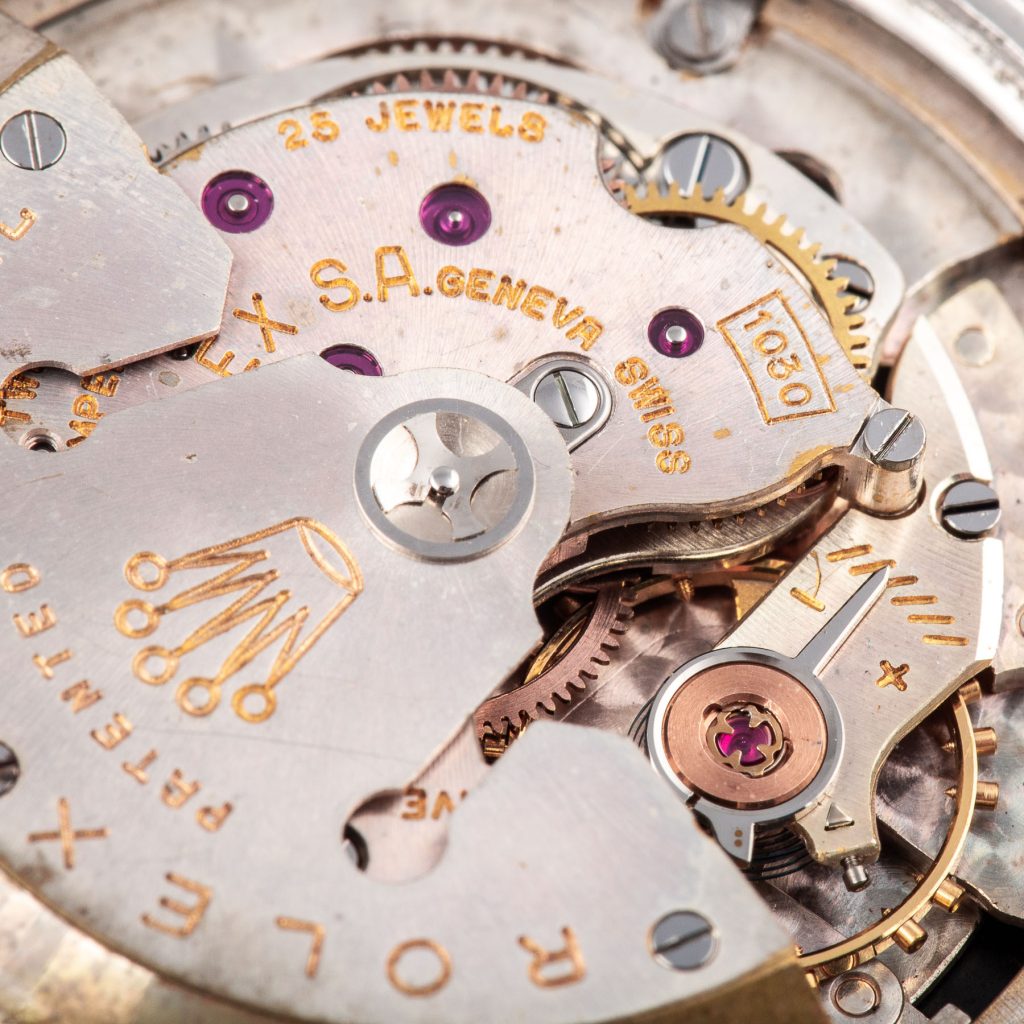
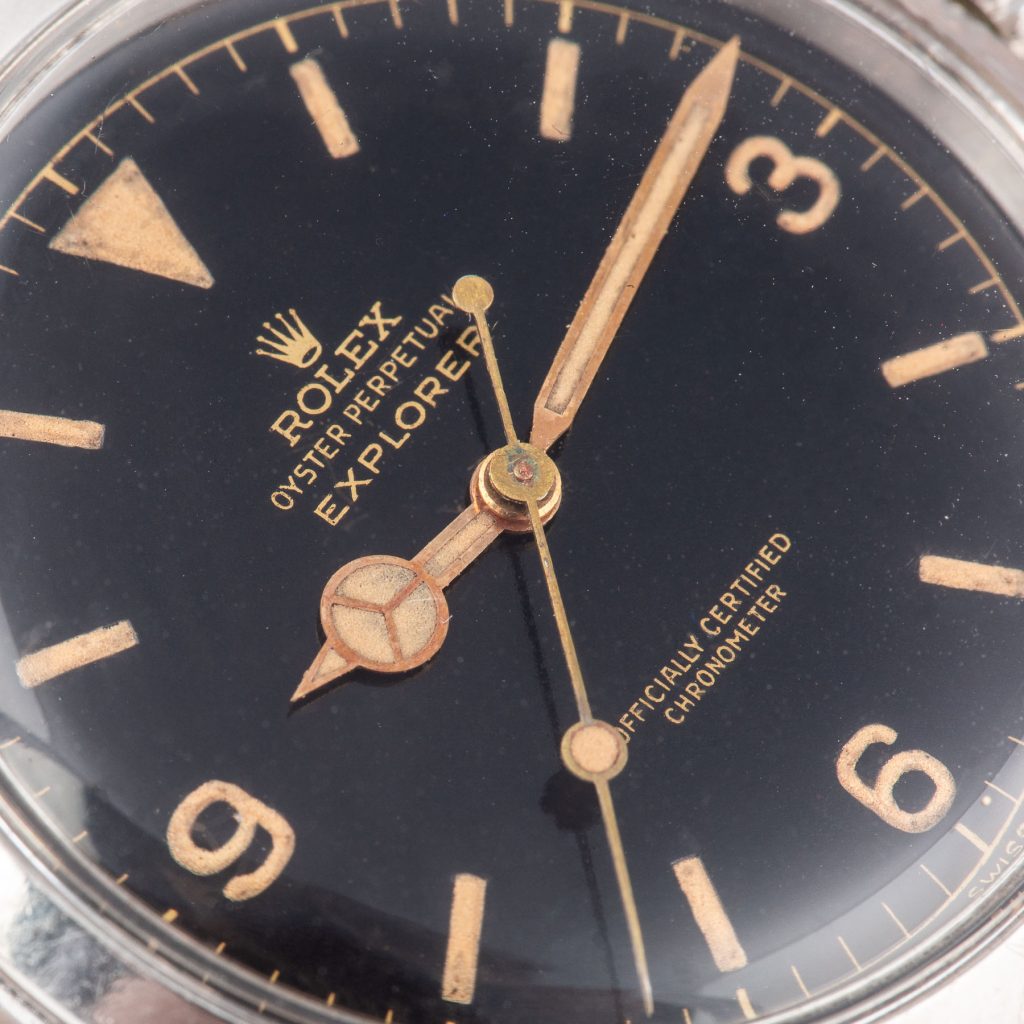
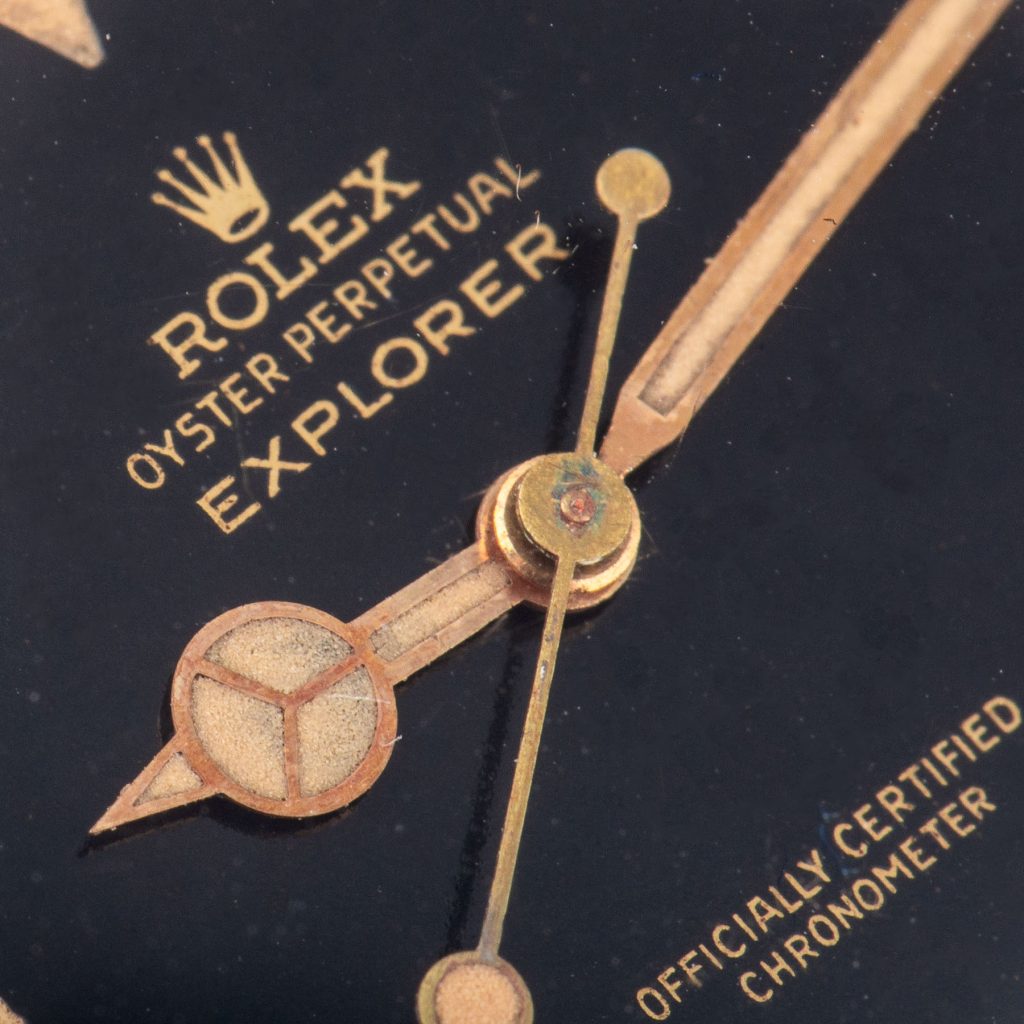
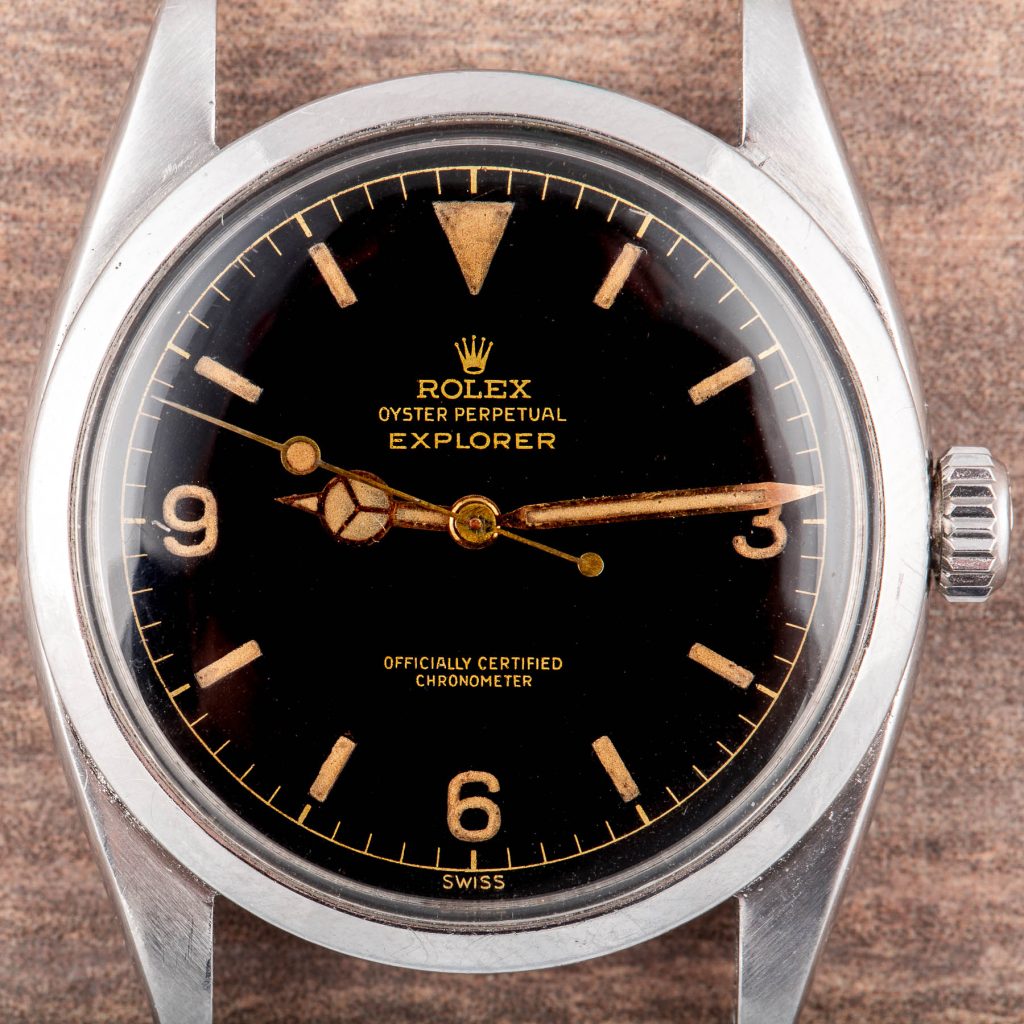
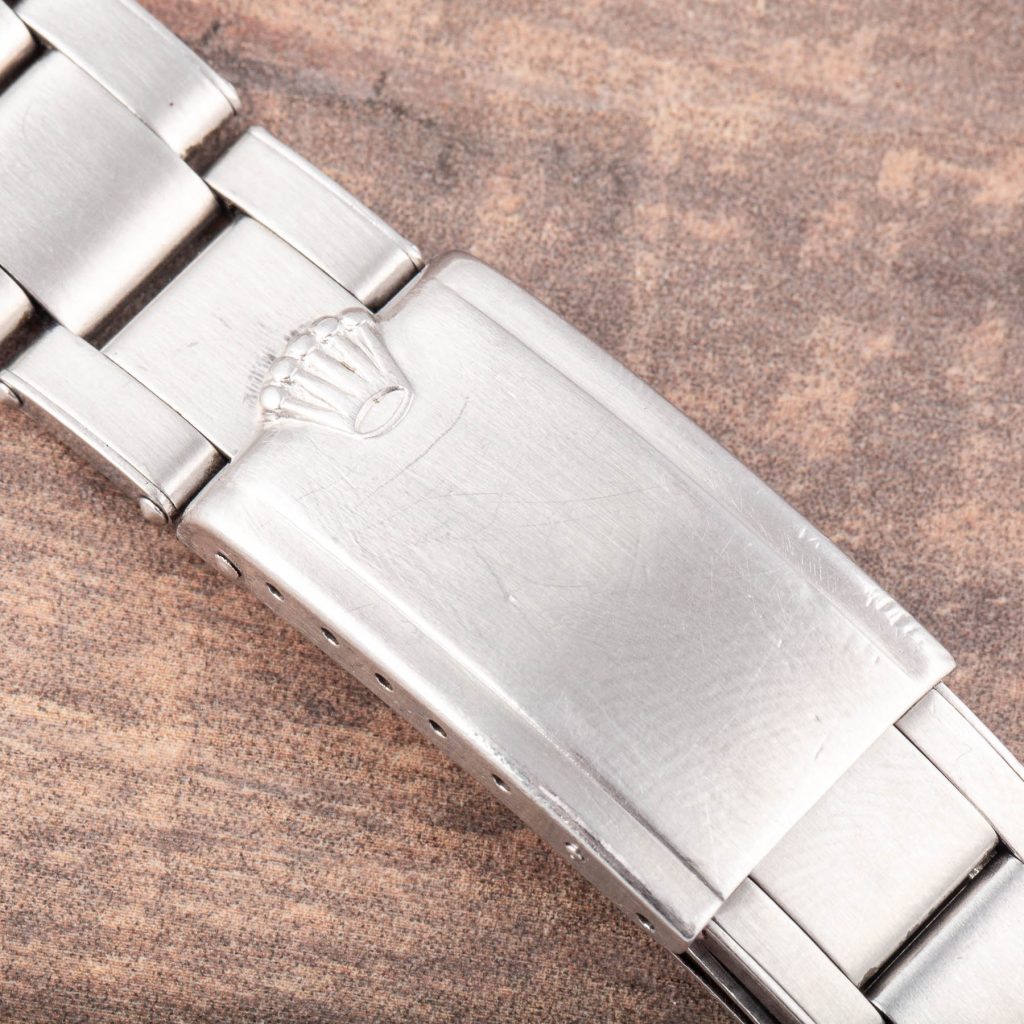
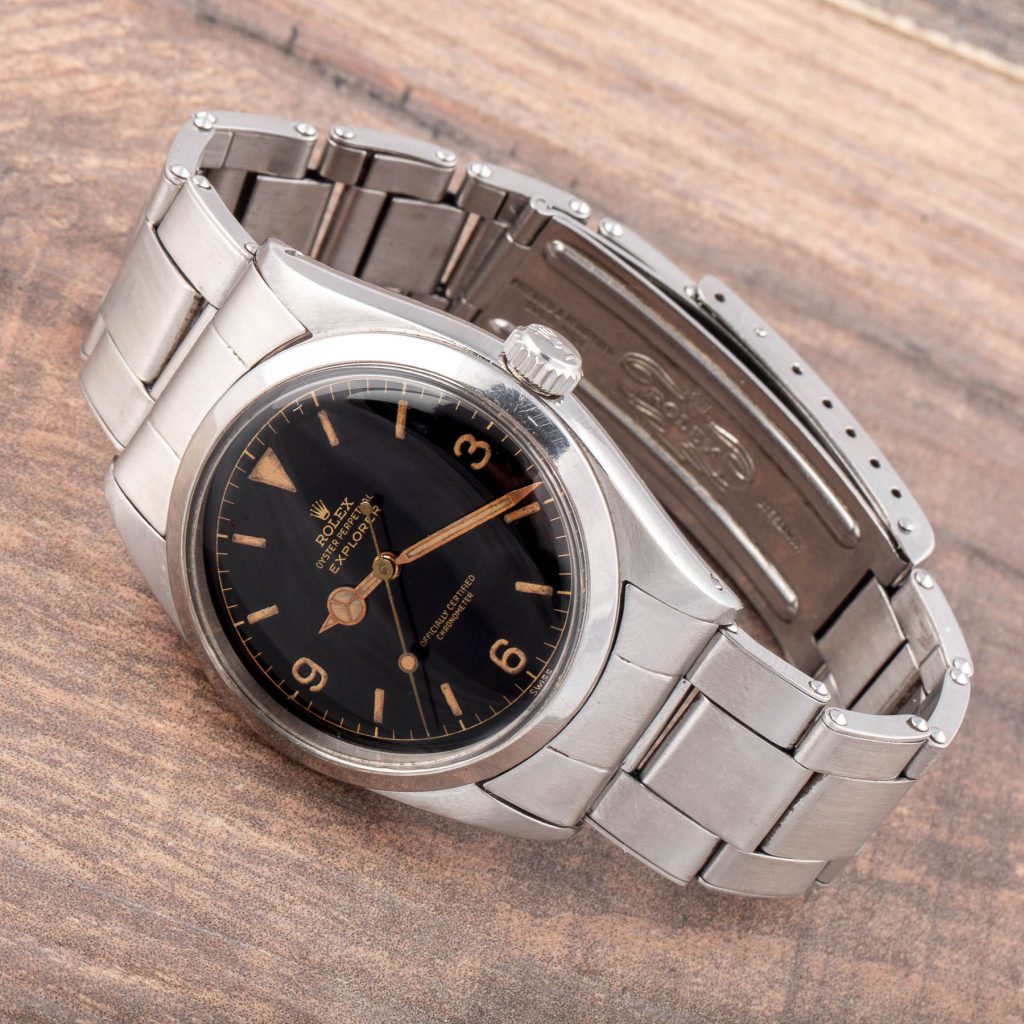
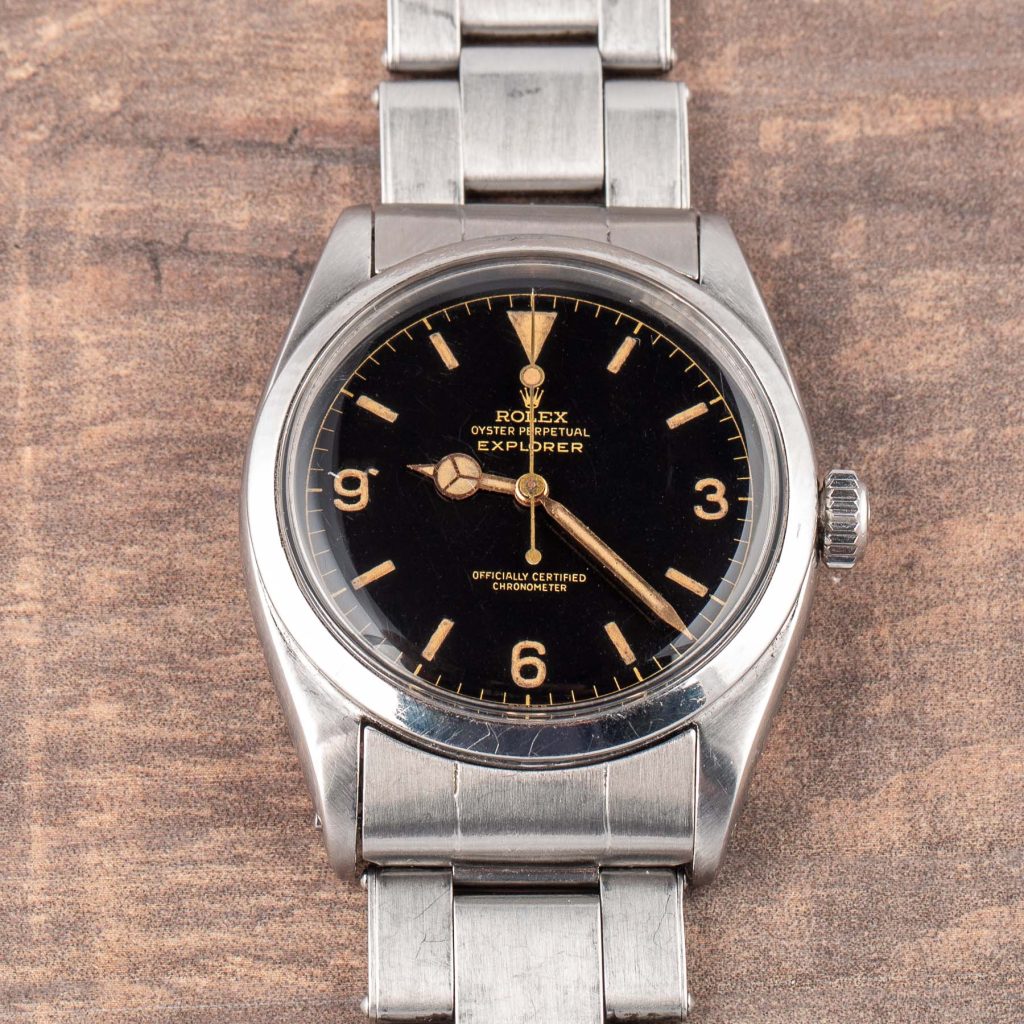
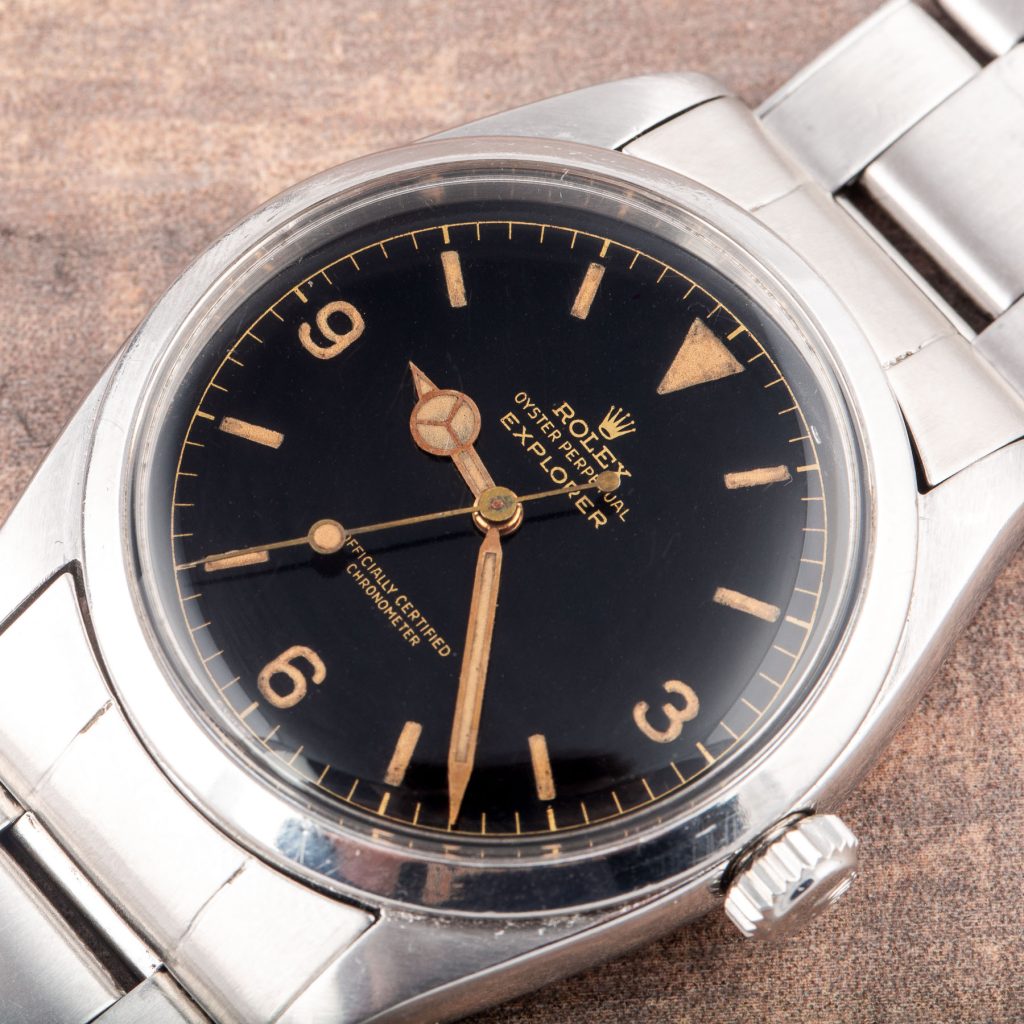
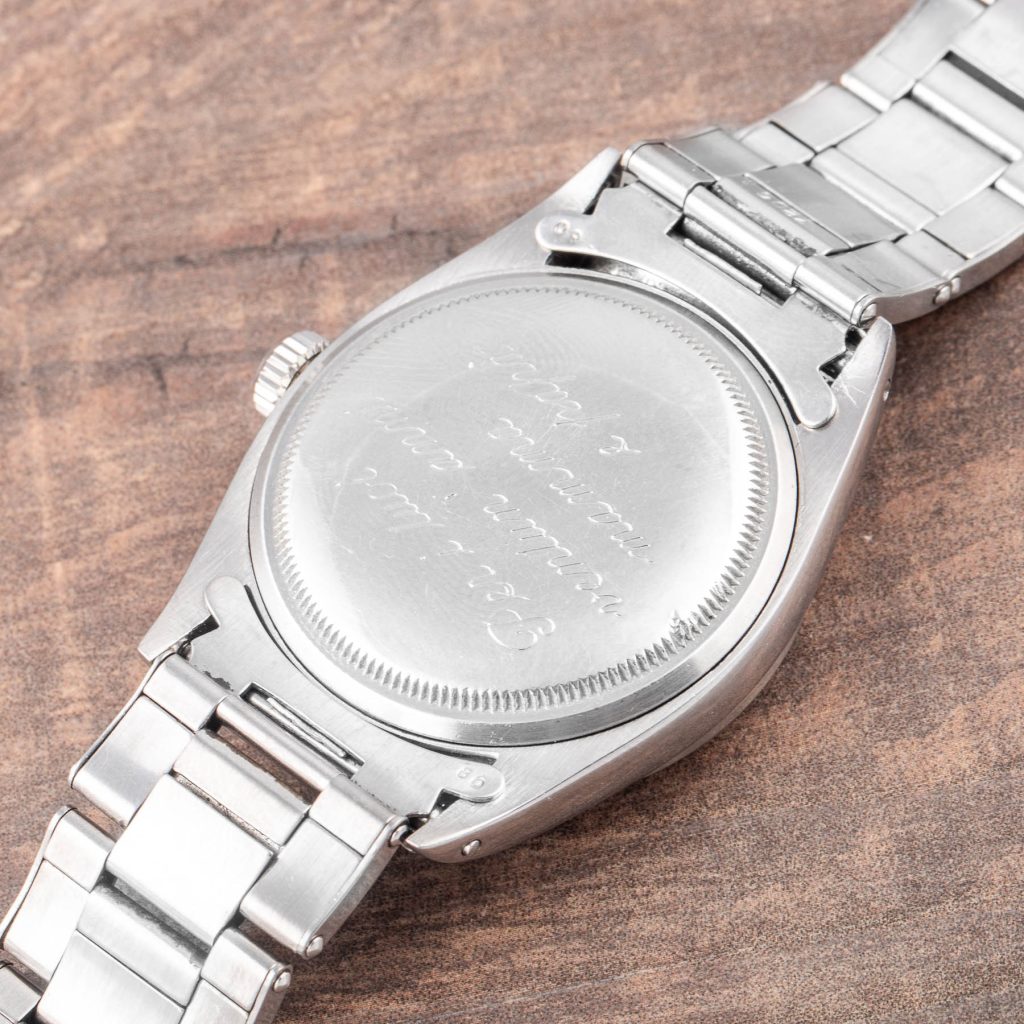
Ref. 1016 – The Definitive Explorer (1960–1989)
- In 1960, Rolex released the legendary Ref. 1016, replacing the 6610. It retained Explorer’s enduring 36 mm stainless steel case, Oyster Twinlock crown, and durable acrylic crystal.
- For the first time, the dial proudly displayed “Superlative Chronometer Officially Certified”, coinciding with the switch to the Cal. 1560 (and later to the higher-beat Cal. 1570 with hacking seconds).
- The 1016 is famed for its wide variety of dial types:
- Gilt gloss dials (early ’60s), including variations with chapter rings, exclamation points, underlines, and diverse coronet shapes such as “Frog Foot” and “Gumby”.
- Matte dials (late ’60s into ’70s and ’80s), evolving through some variants, with flat printing and subtle serif changes.
- Despite the long production span, clean, unpolished, and lightly patinated examples remain desirable collector’s pieces—and often attainable at a more modest price point than other vintage Rolex icons .
- This ref. 1016 has become the archetype of the Explorer: sleek, understated, rugged—enduringly functional and stylish.
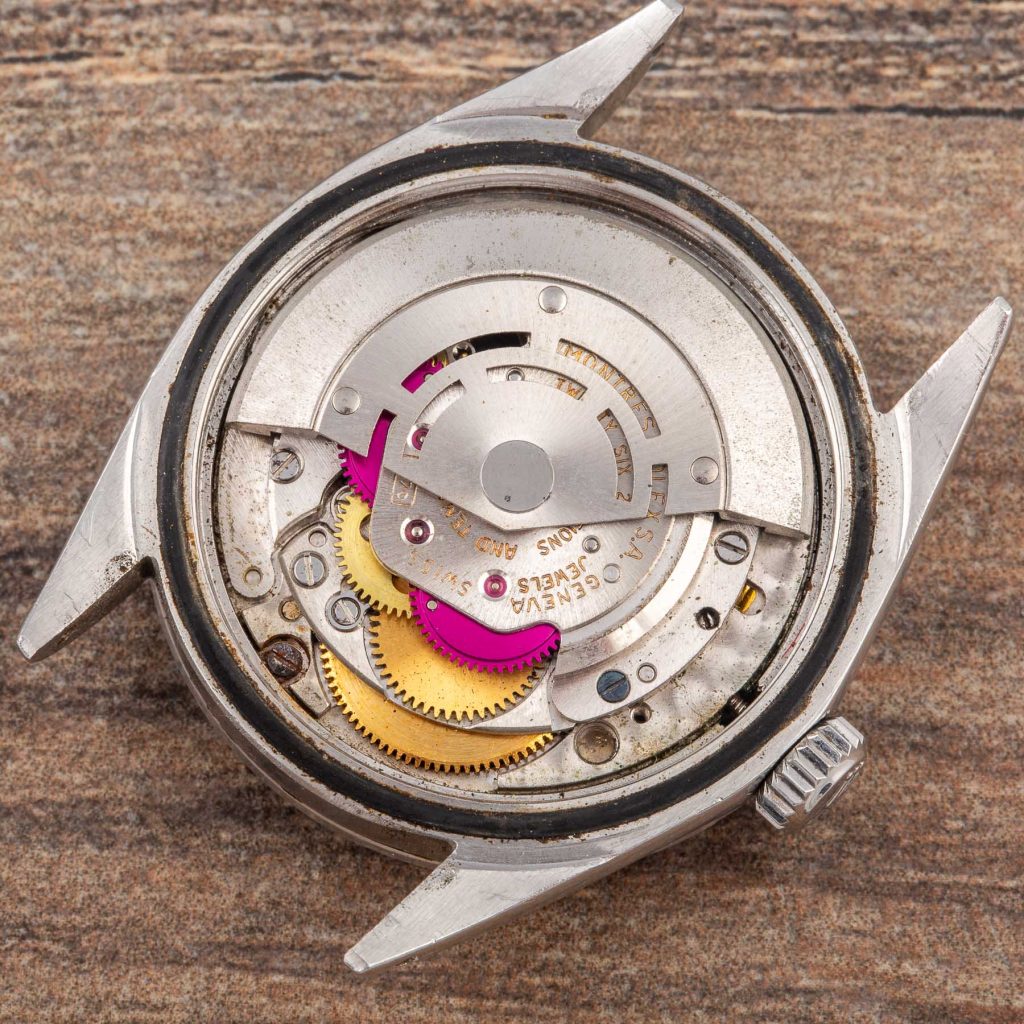
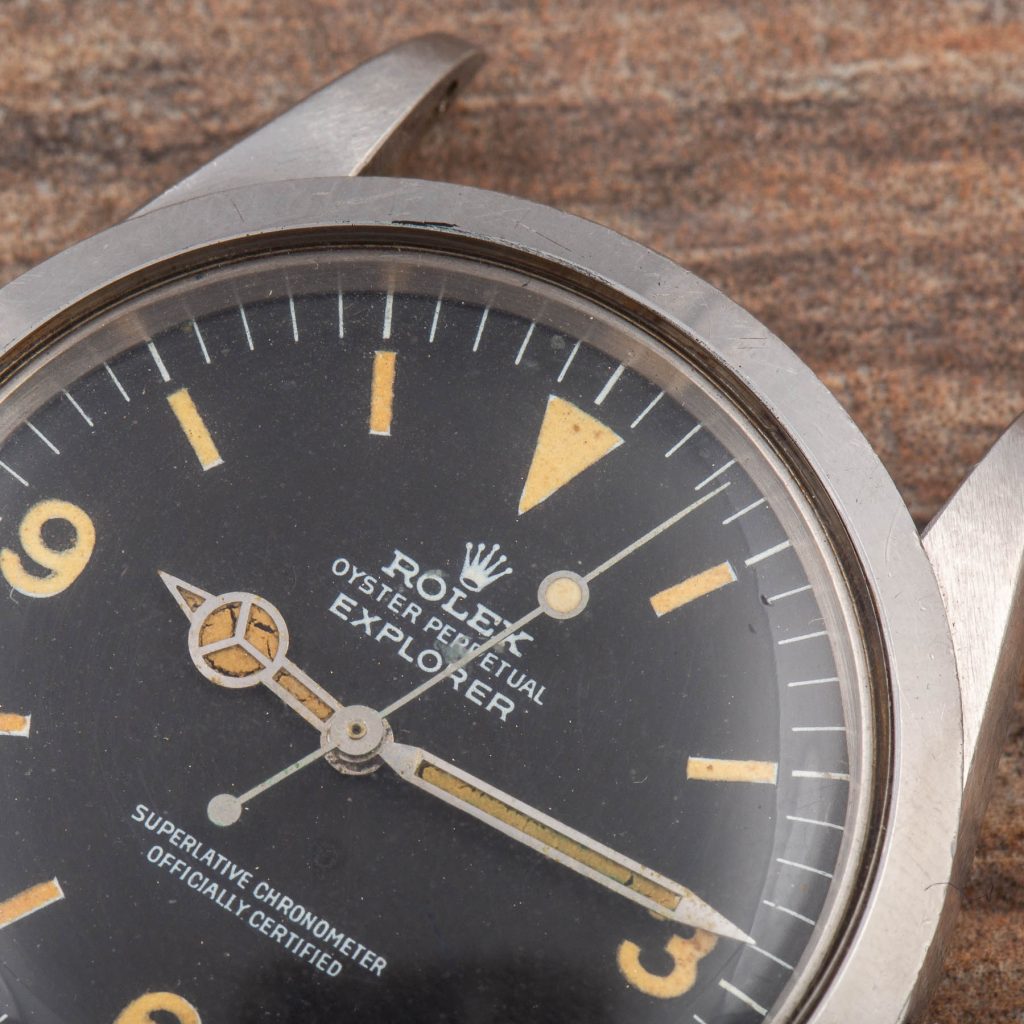
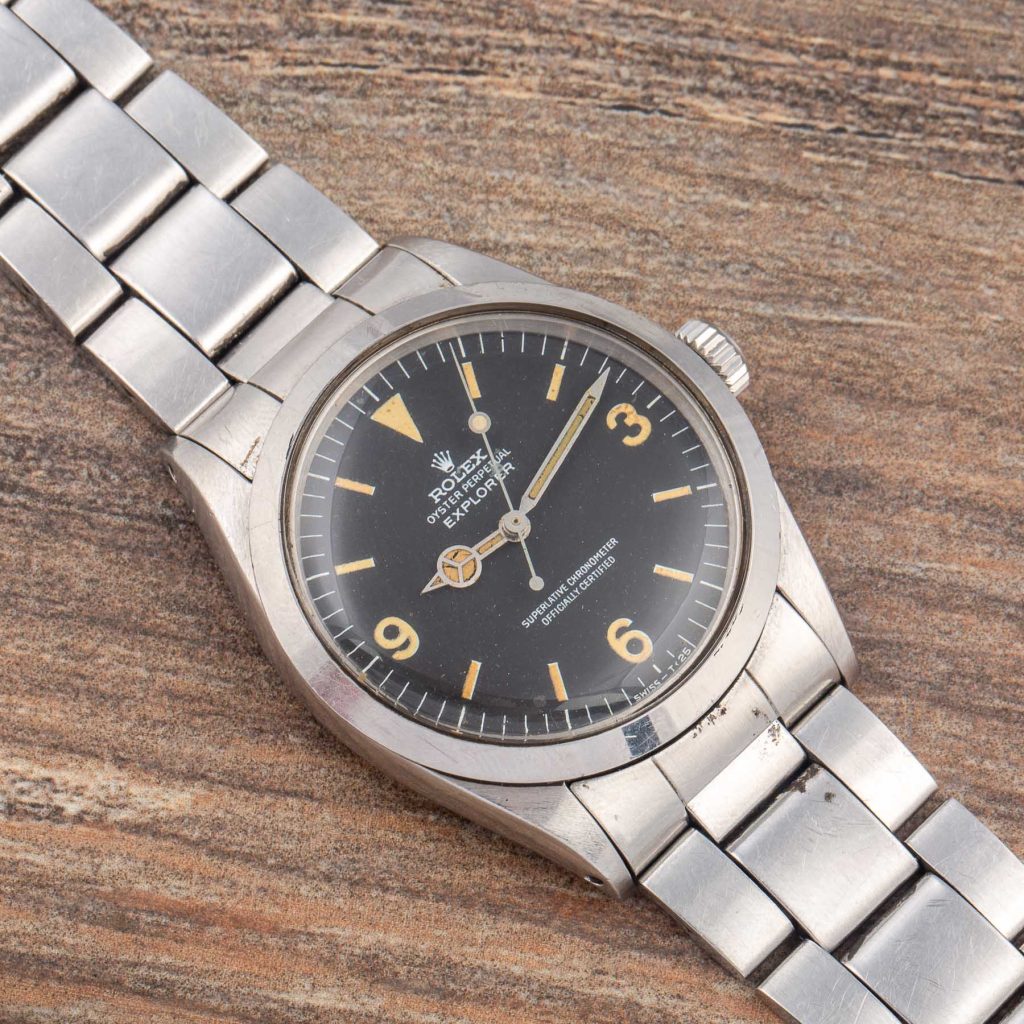
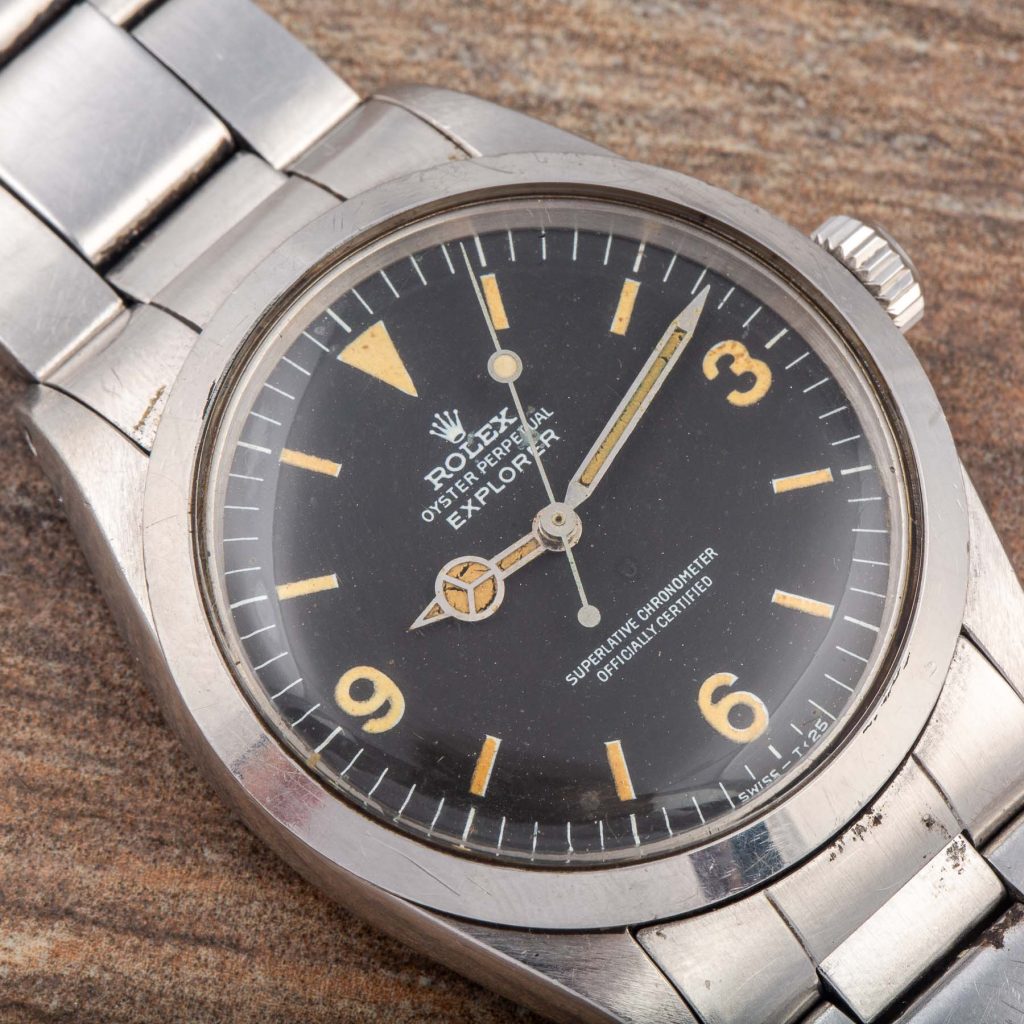
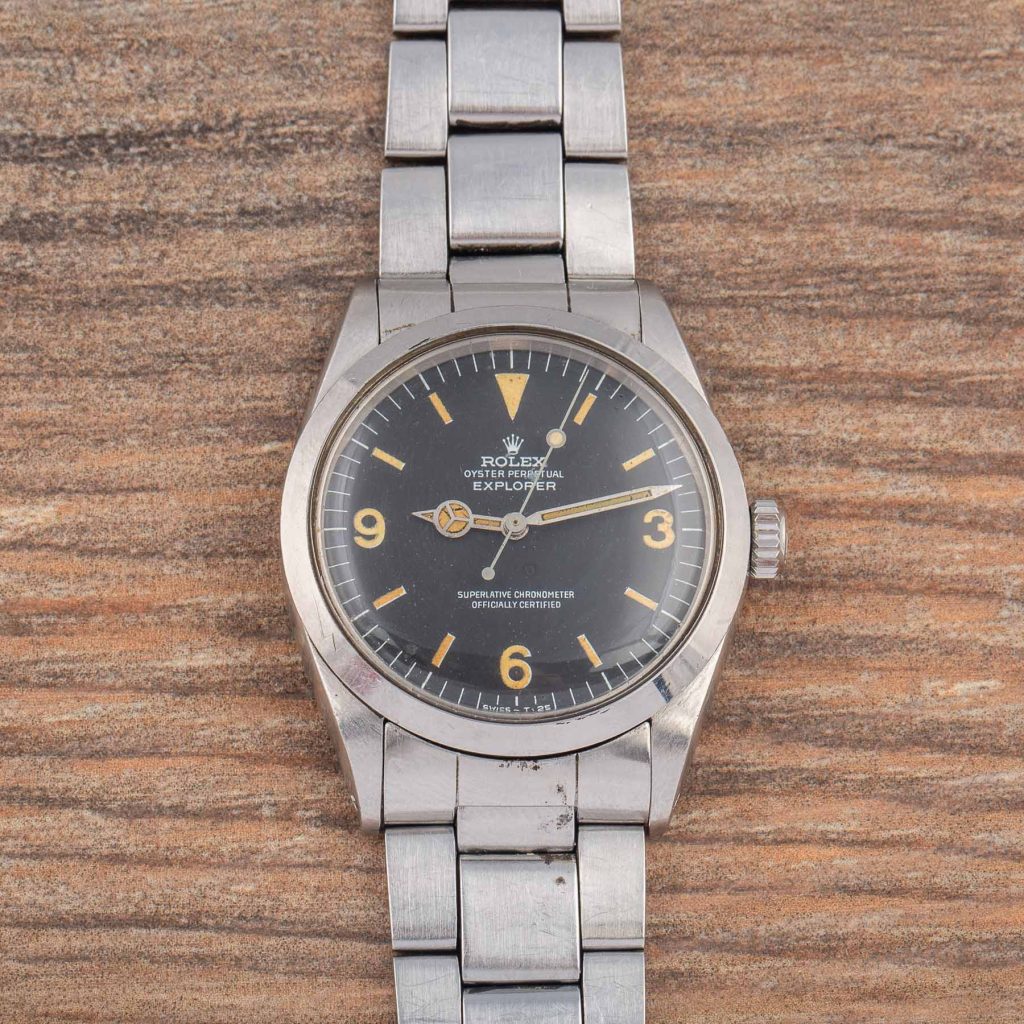
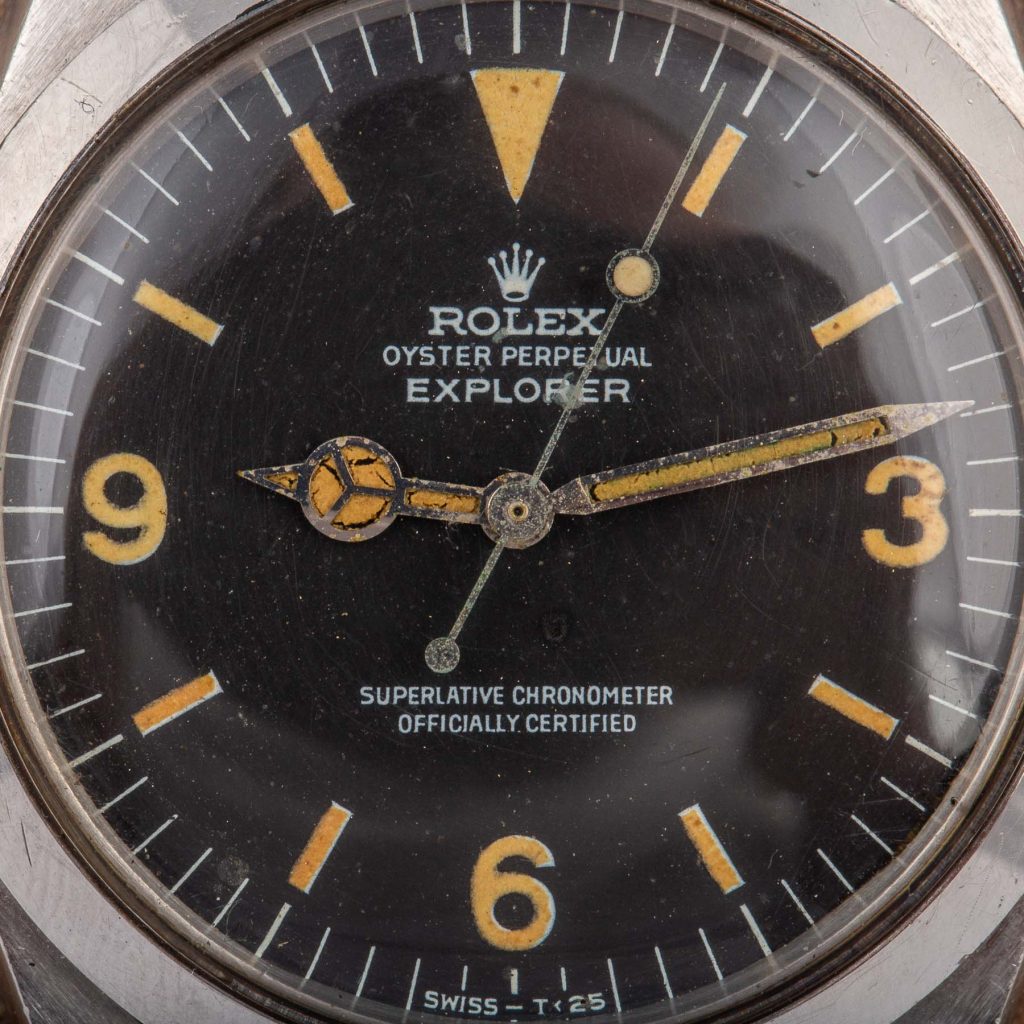
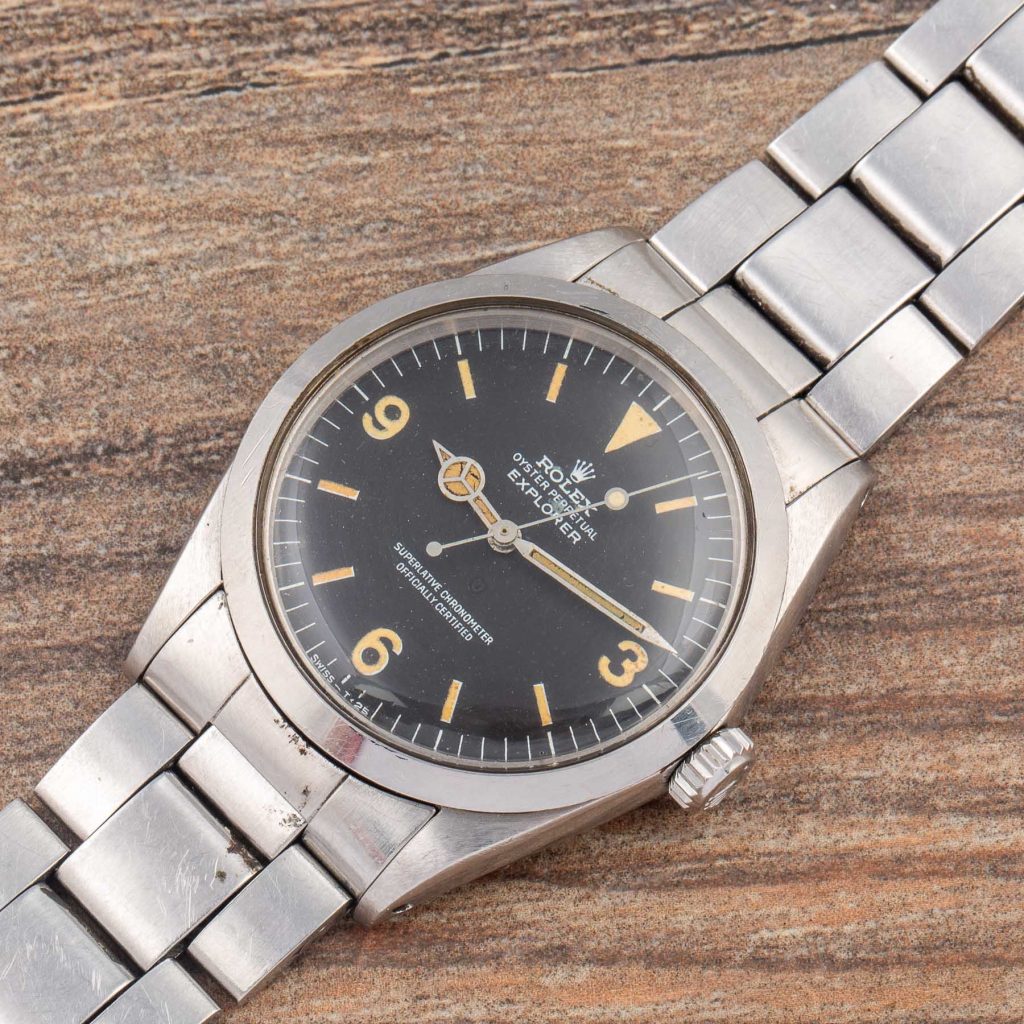
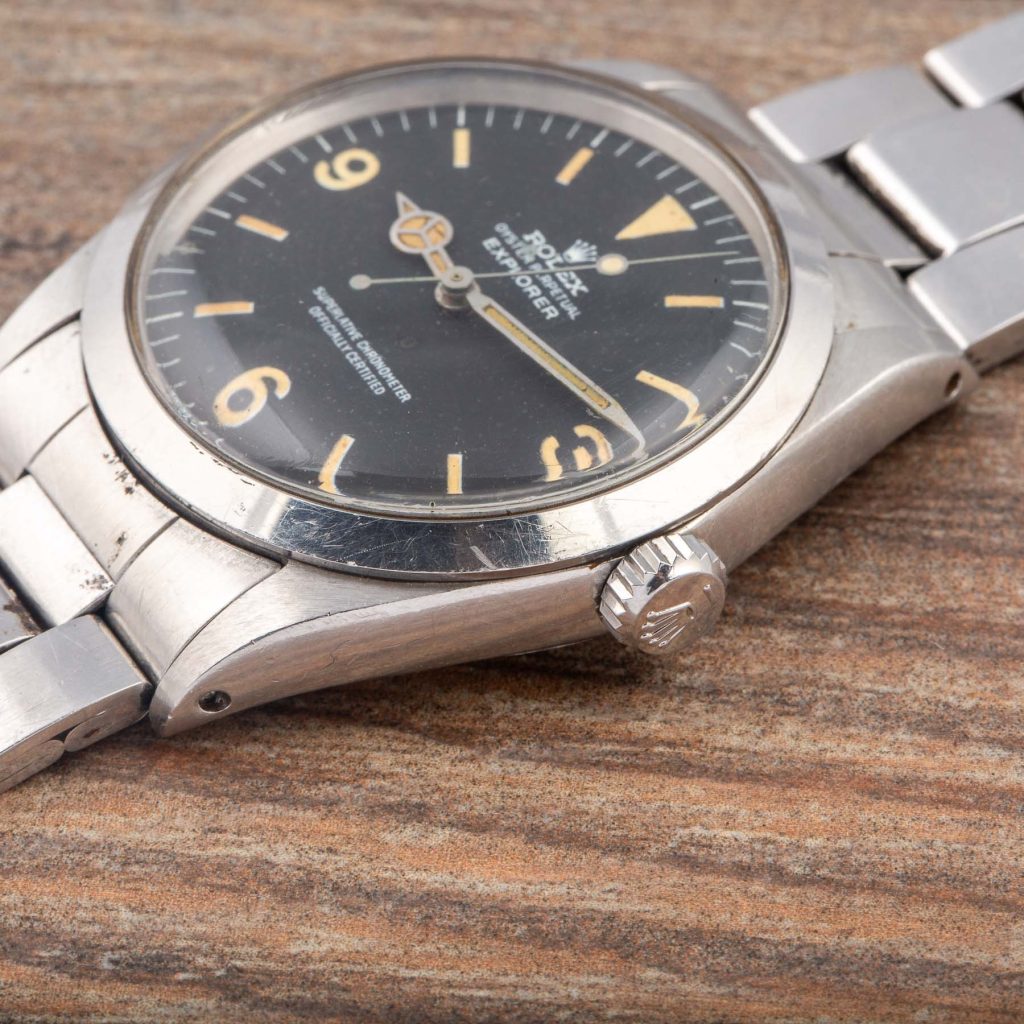
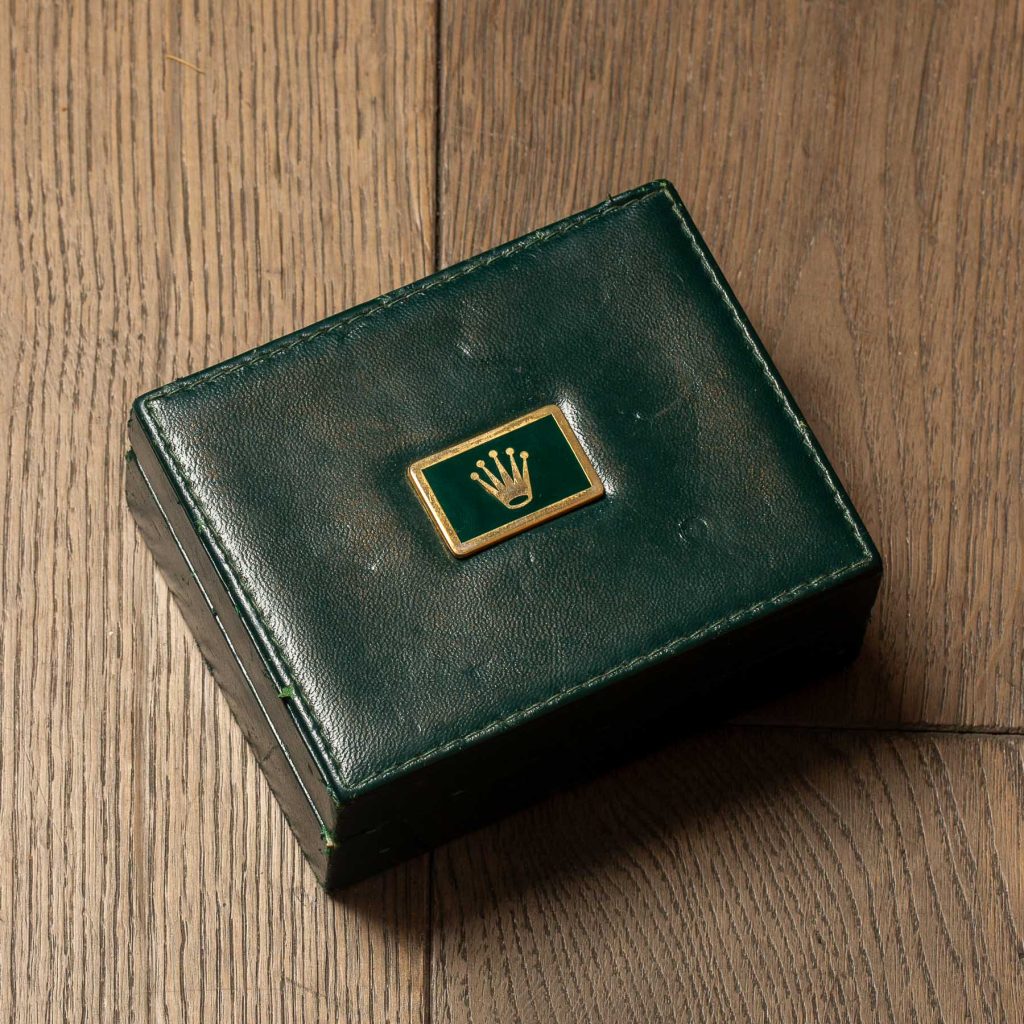
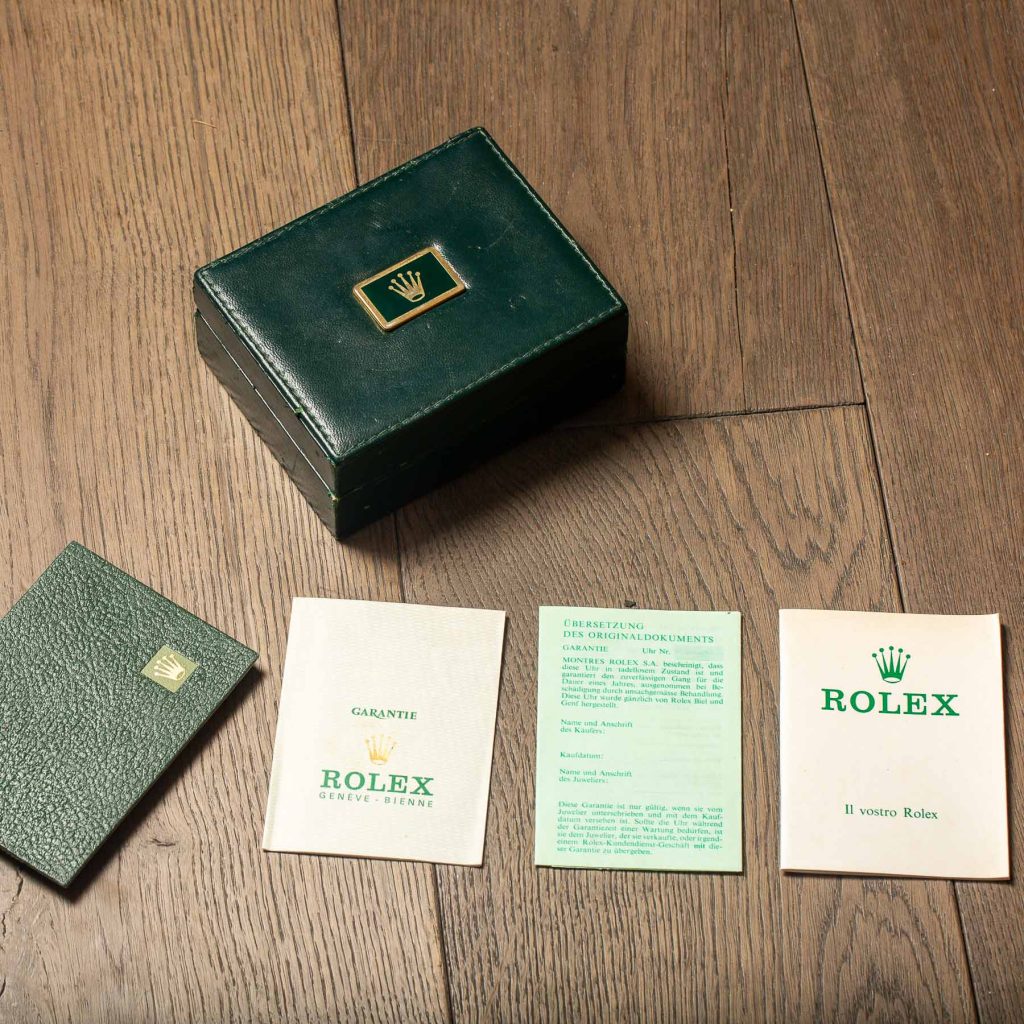
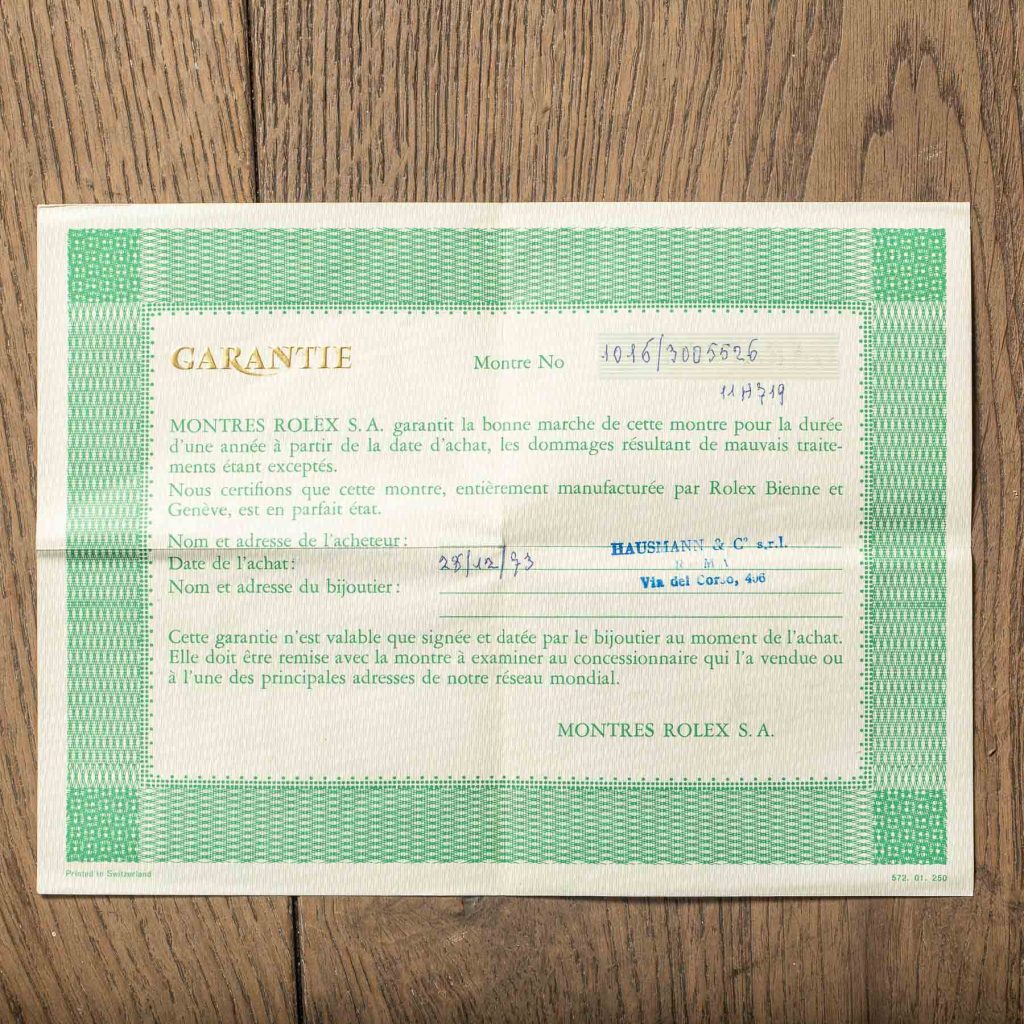
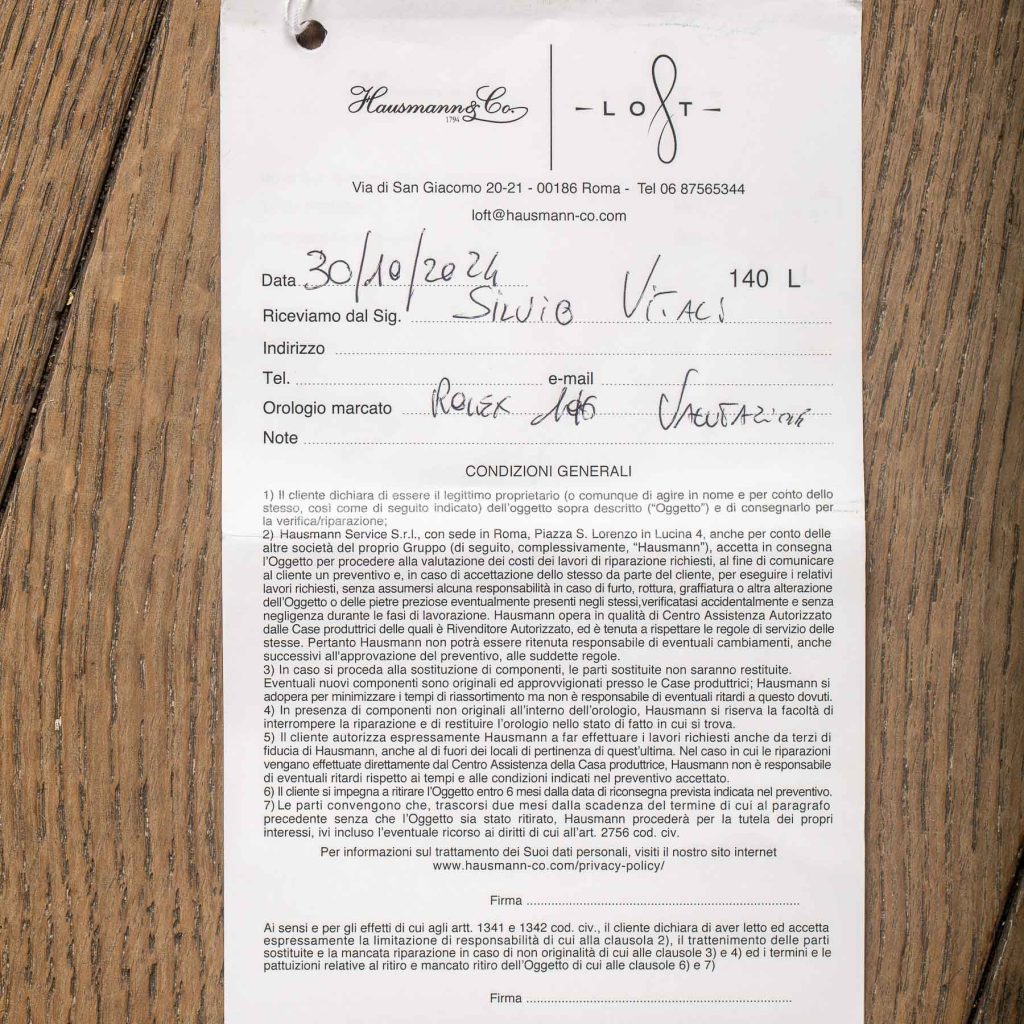
Conclusion – A Tool Watch Above Trends
While other vintage Rolex models often ride waves of hype and speculative value, the Explorer—especially in its early iterations—has always remained rooted in authenticity. It wasn’t born to dazzle but to endure; not to impress, but to perform. From the rugged simplicity of the 6350 to the refined balance of the 1016, the Explorer represents Rolex at its most purposeful.

